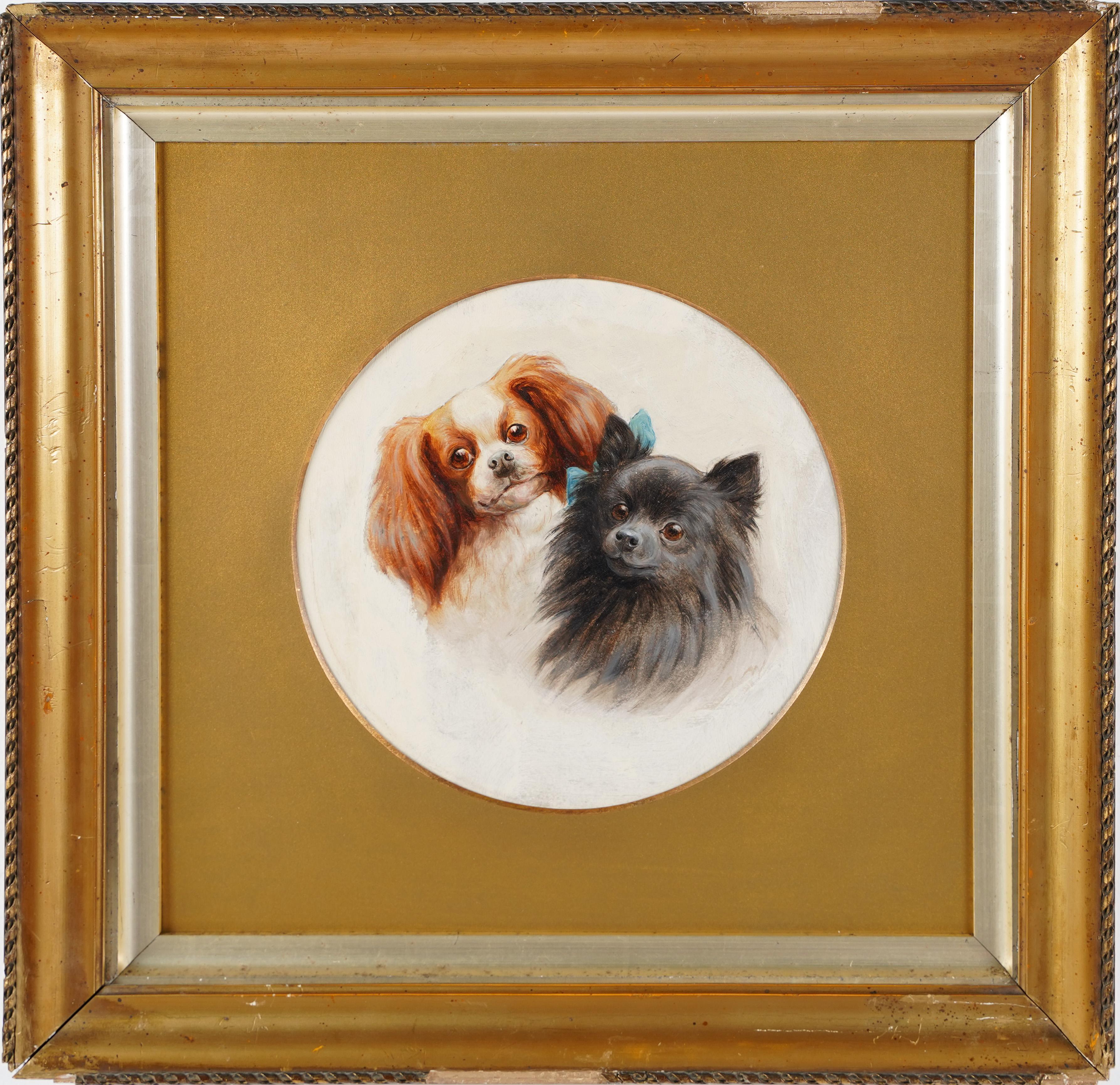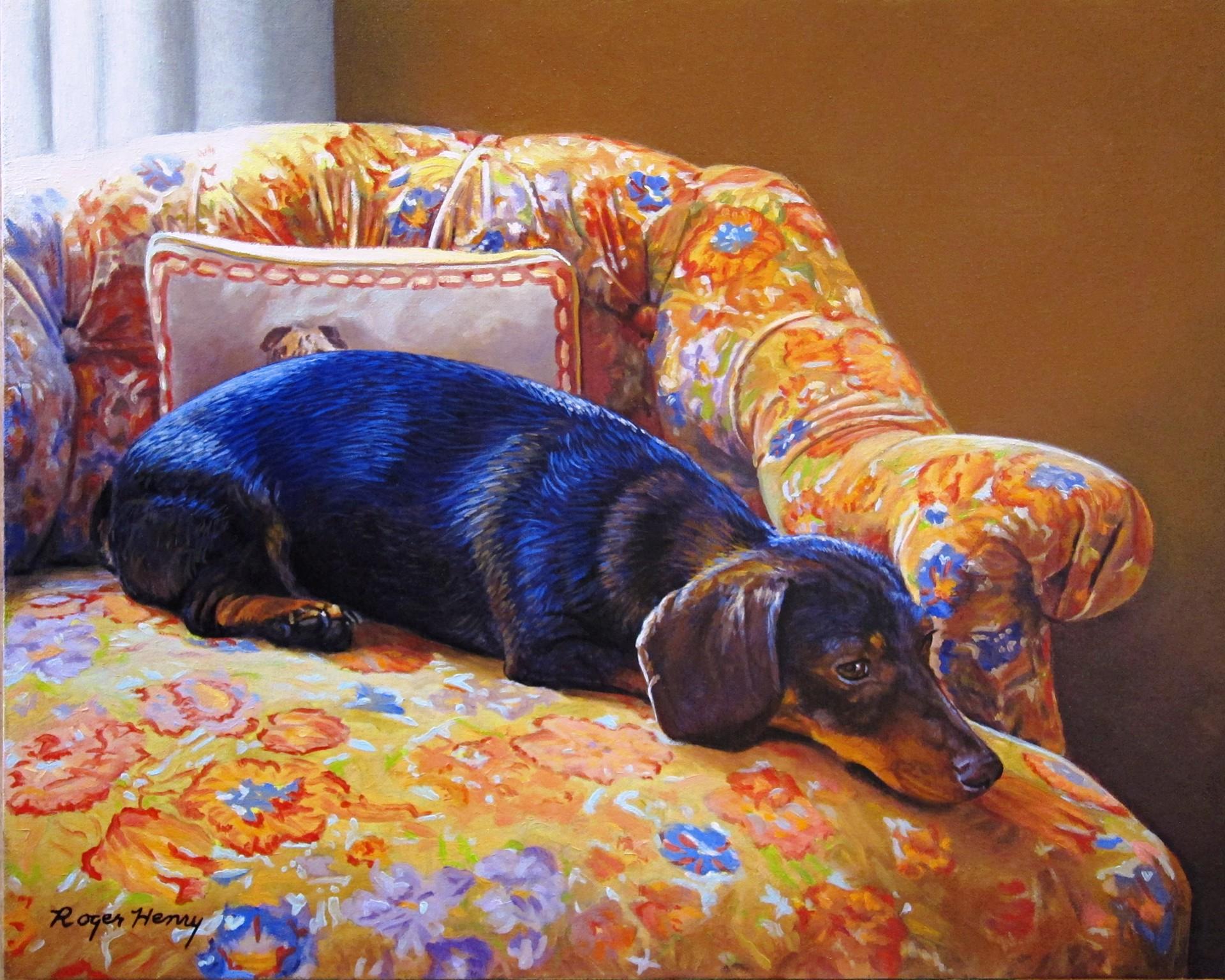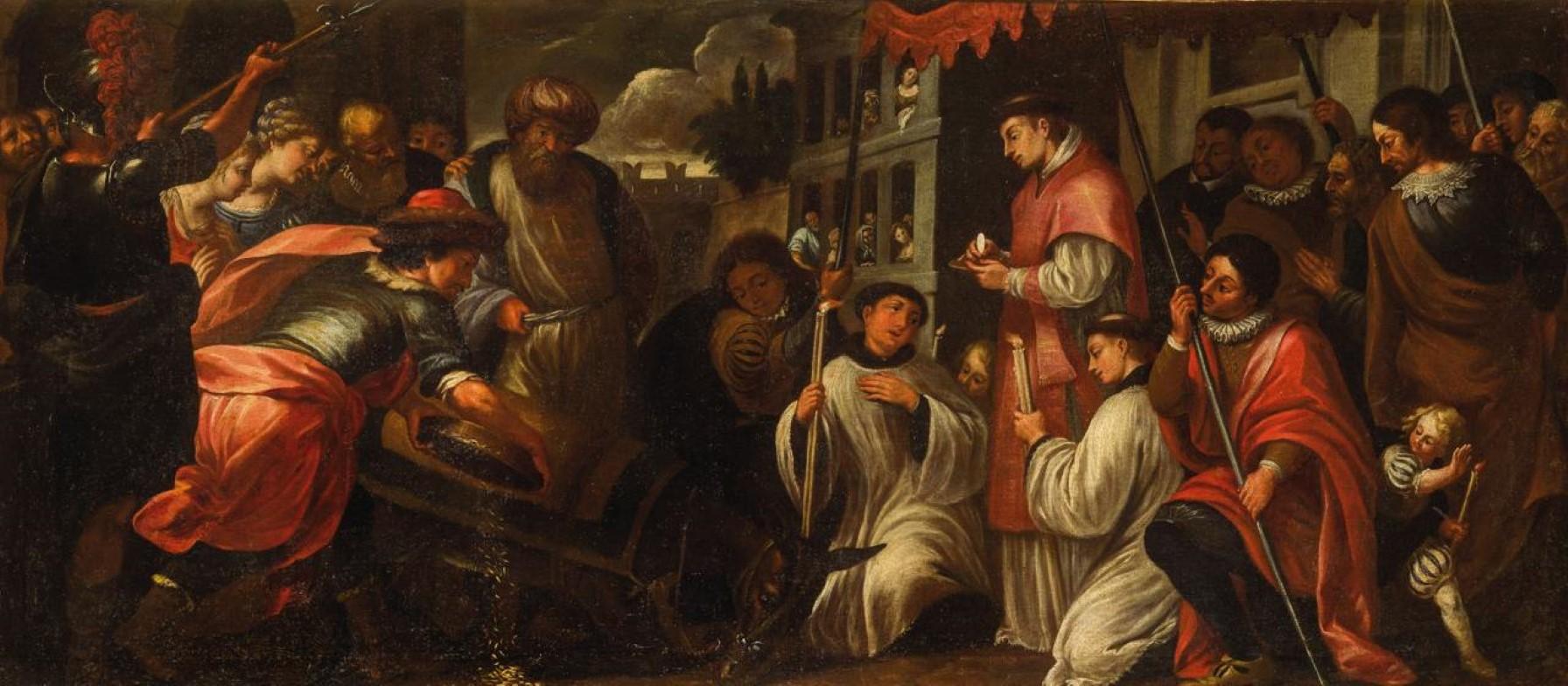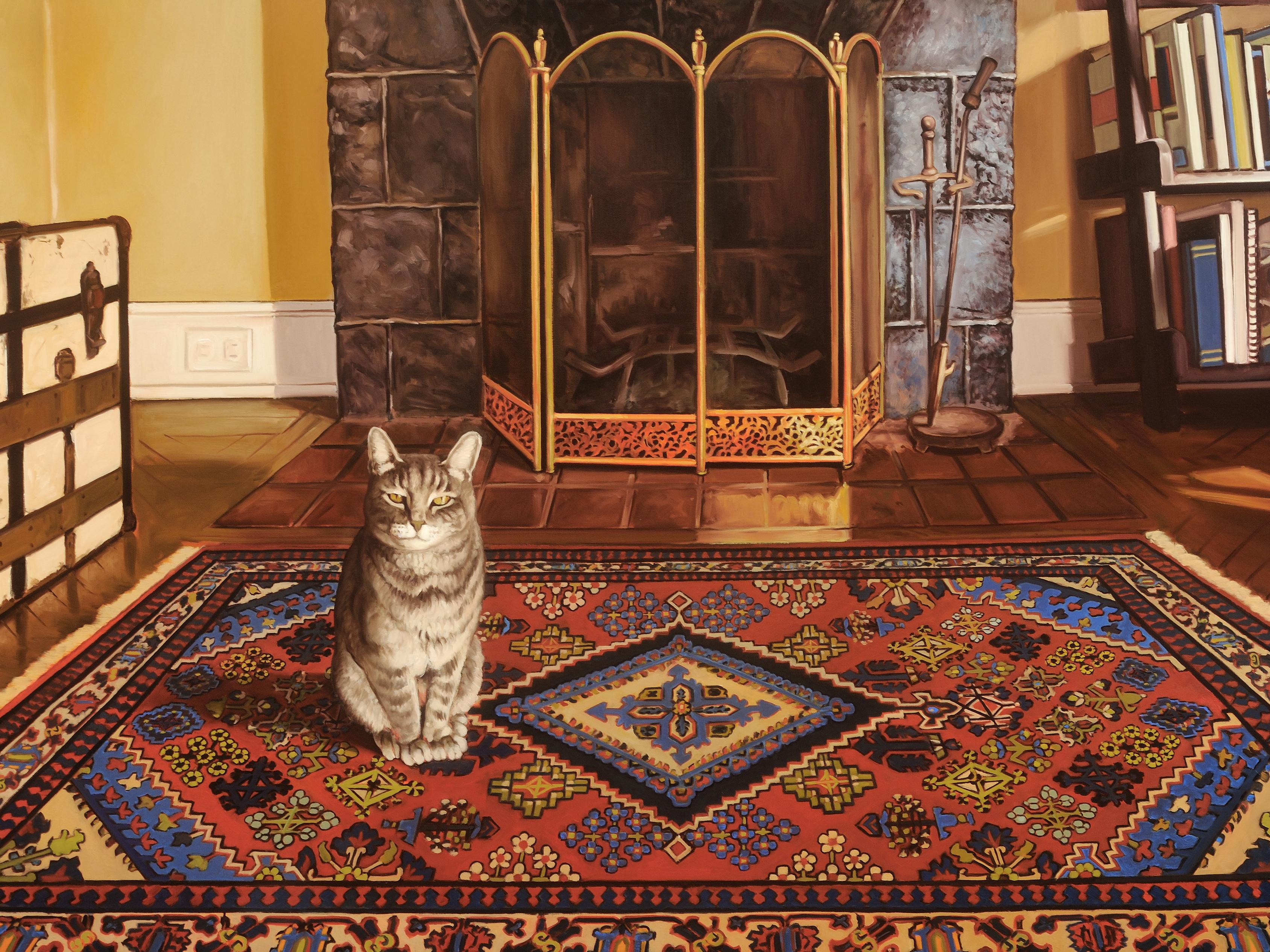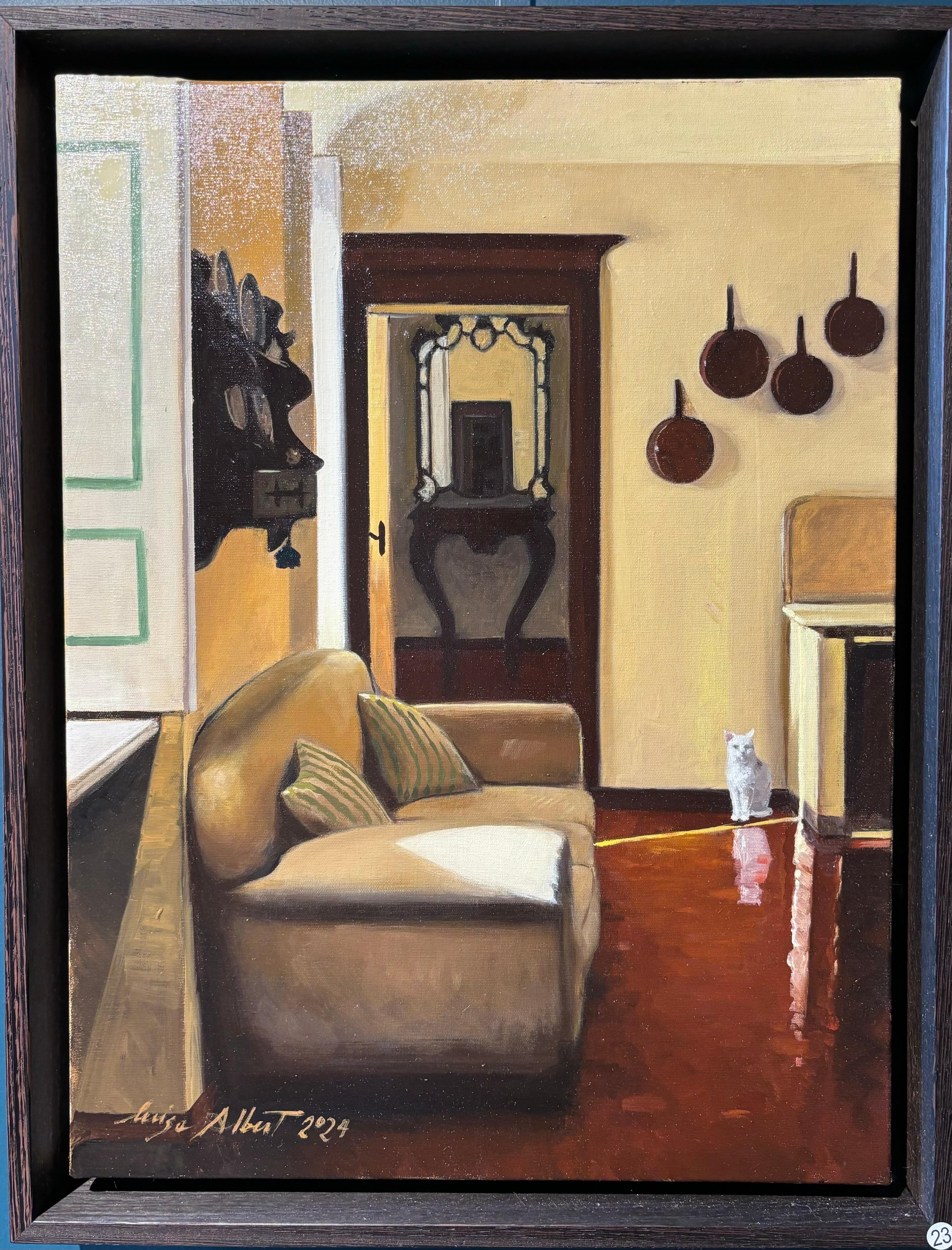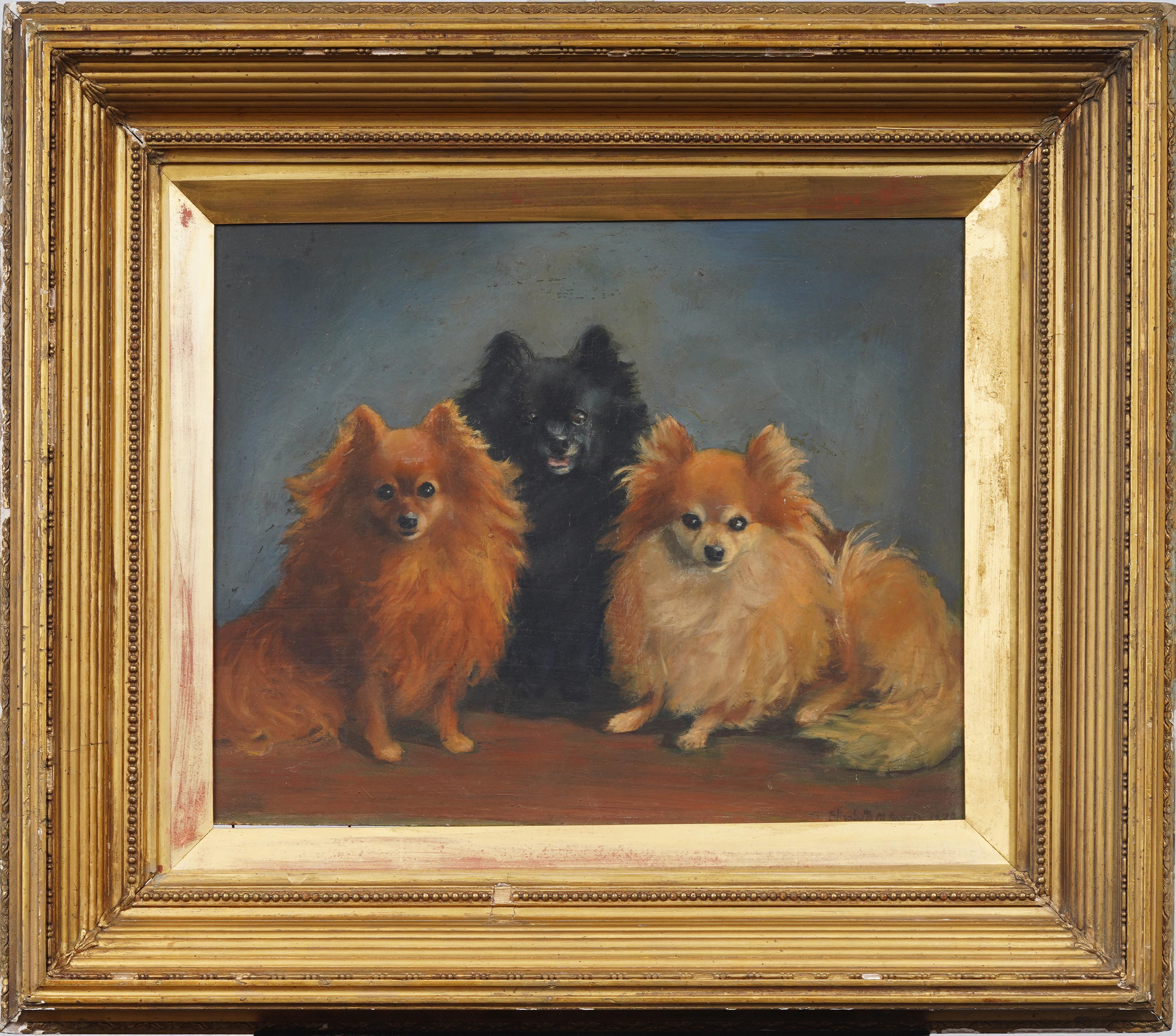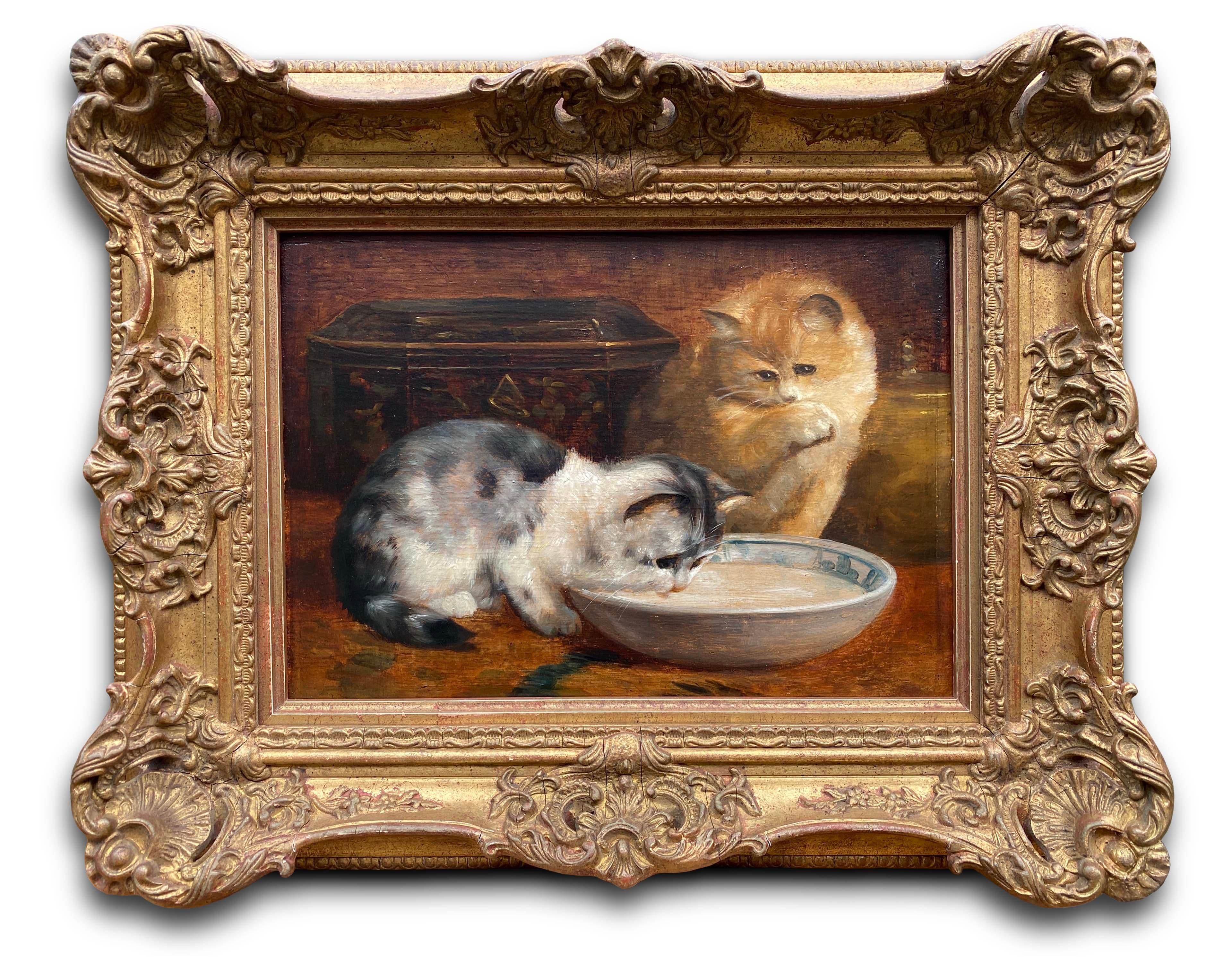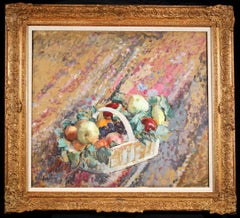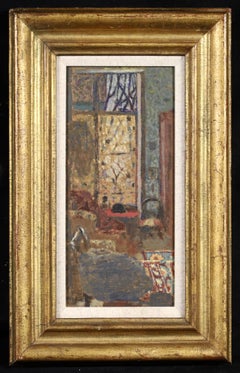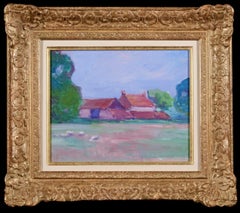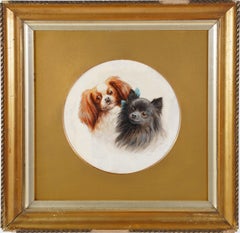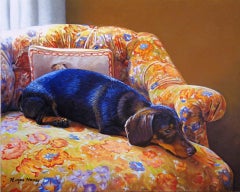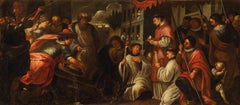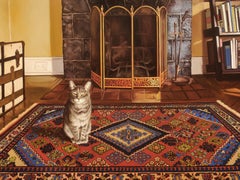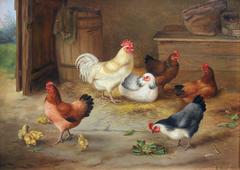
Chickens in a Barn
View Similar Items
Want more images or videos?
Request additional images or videos from the seller
1 of 7
Edgar HuntChickens in a Barn1942
1942
$7,271.07List Price
About the Item
- Creator:Edgar Hunt (1876-1953, British)
- Creation Year:1942
- Dimensions:Height: 11.25 in (28.58 cm)Width: 15.25 in (38.74 cm)
- Medium:
- Movement & Style:
- Period:
- Condition:
- Gallery Location:Marlow, GB
- Reference Number:Seller: LFA0200BF1stDibs: LU41531233463
About the Seller
5.0
Gold Seller
Premium sellers maintaining a 4.3+ rating and 24-hour response times
Established in 2001
1stDibs seller since 2016
706 sales on 1stDibs
Authenticity Guarantee
In the unlikely event there’s an issue with an item’s authenticity, contact us within 1 year for a full refund. DetailsMoney-Back Guarantee
If your item is not as described, is damaged in transit, or does not arrive, contact us within 7 days for a full refund. Details24-Hour Cancellation
You have a 24-hour grace period in which to reconsider your purchase, with no questions asked.Vetted Professional Sellers
Our world-class sellers must adhere to strict standards for service and quality, maintaining the integrity of our listings.Price-Match Guarantee
If you find that a seller listed the same item for a lower price elsewhere, we’ll match it.Trusted Global Delivery
Our best-in-class carrier network provides specialized shipping options worldwide, including custom delivery.More From This Seller
View AllUne Ballerine - Realist Figurative Oil Painting by Auguste Leroux
Located in Marlow, Buckinghamshire
Signed oil on canvas figure in interior circa 1930 by French realist painter Jules Marie Auguste Leroux. The work depicts a brunette ballerina wearing a pink tutu and pointe shoes st...
Category
1930s Realist Figurative Paintings
Materials
Canvas, Oil
Nature morte aux fruits - Post Impressionist Still Life Oil by Henri Lebasque
By Henri Lebasque
Located in Marlow, Buckinghamshire
Signed oil on board still life circa 1937 by French post impressionist painter Henri Lebasque. The work depicts a basket of fruit filled with apples, grapes and oranges.
Signature:
Signed lower left
Dimensions:
Framed: 33"x36"
Unframed: 26"x29"
Provenance:
This work is included in Tome 1 of Mme. Denise Bazetoux's Catalogue Raisonne of the works of Henri Lebasque - No.895.
Madame Lenoble (by 1957)
Christie's, London, 29 November 1995, lot 191
The collection of Ann & Gordon Getty (purchased at the above sale by the Gettys)
Exhibition History:
Paris, Palais Galliéra, "Célébrités et révélations de la peinture...
Category
1930s Post-Impressionist Still-life Paintings
Materials
Oil, Board
Interieur a la fenetre ouverte - Post Impressionist Oil by Edouard Vuillard
By Edouard Vuillard
Located in Marlow, Buckinghamshire
Signed oil on board interior by French Les Nabis painter Edouard Vuillard. The work depicts a room with a large window, outside of which are bare trees. Inside the room are three chairs and a patterned rug on the floor.
Signature:
Signed lower left
Dimensions:
Framed: 20"x13"
Unframed: 13"x6"
Provenance:
Prince Antoine Bibesco (1878-1951) - Special Envoy of Romania to the United States
Piasa Encheres - Paris Lot no. 88 - 8th April 2005 - Sold EUR 118,000 hammer price
Acquired at the above by Thomas Gibson Fine Art - London
Acquired by the previous owner from Thomas Gibson Fine Art - TEFAF Maastricht November 2005
Literature:
This work is included in the catalogue rasionne of the work of Edouard Vuillard under Ref Volume II No. 172 - illustrated and described
Access to the raisonne online can be found at the Wildenstein Plattner Institute website.
The work is described as being executed in the period 1899 to 1904 by Antoine Salomon and Guy Cogeval
Édouard Vuillard attended the Lycée Condorcet in Paris, where he made friends with Maurice Denis, Lugné-Poe, and Ker-Xavier Roussel, later his brother-in-law. He studied in Maillart’s studio; for six weeks came under the tutelage of Jean-Léon Gérôme at the École des Beaux-Arts in Paris; and later under William Bouguereau and Robert at the Académie Julian, where he became closely linked with the Nabis group (from the Hebrew word for ‘prophet’). He met Marcel Proust in 1902. From 1908, he taught at the Académie Ranson. In 1937, he was elected member of the Institute.
At first, Édouard Vuillard painted small subjects, disciplined and proficient, qualities for which the prestigious École Française was famous. His earliest still-lifes (1888) are astonishing in their decisiveness and subtlety. His empathy for the object had already compelled him to soften its appearance; the object, which, by virtue of its bright or glossy presence, remained the nonego and the ‘thing represented’ for so many others. ‘Intimacy’ developed immediately between the painter and this modest environment; inhabiting it every day enabled him to celebrate its splendour, and it was to remain his favourite environment. But he was already alternating between small portraits and still-lifes, which gained recognition because of their natural qualities and dignity of tone: a rare combination in a beginner.
About 1890, influenced indirectly by Paul Gauguin, all the certainties which the self-styled Nabis painters had contented themselves with suddenly collapsed. Everything was called into question again: both the linear layout of the picture and its colour scheme; the choice of subject and its material aspect; its manufacture and its purpose. Vuillard’s paintings at that time show surprising, bold innovations and an arbitrary power, which one would expect 15 or 20 years later at the height of the Fauvist period. The preoccupation with an internal geometry set them apart from earlier studies. From then on, the paintings were based on forms, lines, and colours. Vuillard made concessions. He produced a portrait or interior with its furniture and its wallpapers, in which the family inhabiting it, evolves. Treated with flat areas of colour and solid shades of ochres, reds, blues, and saffron yellow, without modulation, they seem to prefigure certain paintings by Henri Matisse and Roger de La Fresnaye.
In 1891, Édouard Vuillard painted an Elegant Lady, a silhouette seen from the back; a long vertical shape starting from the hair decorated with brown feathers; there is a kind of pink cloak, the tight and never-ending black skirt, erect in front of a half-open, bright orange door in a green wall, from where the light of another vertical shape emerges, which is bright yellow, and is reflected in red on the parquet at the feet of the elegant lady. This painting meets his concerns about the actual moment of creating ‘harmonies corresponding to our feeling’, and by virtue of its almost geometric structure, its drawing entirely free of detail, its light effects and colour harmonies, very much prefigures aspects of the future Abstraction movement and is oddly reminiscent of the final period of Nicolas de Staël.
All too often, Édouard Vuillard is only admired in his role as the harmonist, the serene contemplator who combines an exquisite sense of nuance, rhythms, and values with the most acute observation. These singular investigations, these three-dimensional meditations including a table, a folding metal cot...
Category
1890s Post-Impressionist Interior Paintings
Materials
Oil, Board
A Sussex Farm - Fauvist Landscape Oil Painting by Robert Polhill Bevan
By Robert Polhill Bevan
Located in Marlow, Buckinghamshire
Fauvist oil on board landscape circa 1905 by British painter Robert Polhill Bevan. The piece depicts a view of farm in Sussex. The red-roofed farmhouses are nestled between lush gree...
Category
Early 1900s Fauvist Landscape Paintings
Materials
Oil, Board
Effets de lumiere dans le pre - Post Impressionist Landscape Oil by H Le Sidaner
By Henri Le Sidaner
Located in Marlow, Buckinghamshire
Signed post impressionist animals in landscape oil on board by French painter Henri Le Sidaner. This stunning piece depicts cattle in a field. The sun is starting to set casting blue...
Category
1890s Post-Impressionist Landscape Paintings
Materials
Oil, Board
Deux vieillards aux chatons - Impressionist Figurative Oil by J F Raffaelli
By Jean-Francois Raffaelli
Located in Marlow, Buckinghamshire
Signed figures in interior oil on panel by French impressionist painter Jean-Francois Raffaelli. The piece depicts two old men seated in an interior. One is reading his paper as the other naps and there are several kittens on the floor. Painted in the artist's distinctive style.
Signature:
Signed lower left
Dimensions:
Framed: 9.5"x8"
Unframed: 5.5"x4"
Provenance:
Brame & Lorenceau have confirmed the authenticity of this work and it will be included in the digital catalogue raisonne of the painter which is under preparation
A certificate of authenticity fromBrame & Lorenceau accompanies this painting
Private collection - United States
Original artists label verso
Jean-François Raffaëlli's father was a failed Italian businessman and Raffaëlli himself was, among other things, a church chorister, actor and theatre singer. He then studied under Gérôme at the École des Beaux-Arts in Paris. He travelled to Italy, Spain and Algeria and on his return to France settled in Asnières.
In 1876, on a trip to Brittany, he first saw the potential of realist subject matter, if treated seriously. He became involved in meetings of artists at the Café Guerbois, where the Impressionist painters used to gather. As a result, Degas, contrary to the advice of the group, introduced Raffaëlli to the Impressionist exhibitions - according to one uncertain source as early as the very first exhibition, at the home of Nadar, and certainly to those of 1880 and 1881.
In 1904, Raffaëlli founded the Society for Original Colour Engraving. He first exhibited at the Salon de Paris in 1870 and continued to exhibit there until he joined the Salon des Artistes Français in 1881, where he earned a commendation in 1885, was made Chevalier of the Légion d'Honneur in 1889 and in the same year was awarded a gold medal at the Exposition Universelle. In 1906 he was made Officier of the Légion d'Honneur. He was also a member of the Société Nationale des Beaux-Arts. In 1884, a private exhibition of his work cemented his reputation.
He contributed to several newspapers such as The Black Cat (Le Chat Noir) in 1885 and The French Mail (Le Courrier Français) in 1886 and 1887. He published a collection entitled Parisian Characters, which captured his favourite themes of the street, the neighbourhood and local people going about their lives. In 1880 he participated, with Forain, on the illustration of Joris Karl Huysmans' Parisian Sketches (Croquis Parisiens). He also illustrated Huysman's Works. As well as working as an illustrator, he also made etchings and coloured dry-points.
His early attempts at painting were genre scenes, but once he was settled in Asnières he started to paint picturesque views of Parisian suburbs. From 1879 onwards, his subject matter drew on the lives of local people. These popular themes, which he treated with humanity and a social conscience, brought him to the attention of the social realist writers of the time such as Émile Zola. In addition to his realist style, Raffaëlli's dark palette, which ran contrary to the Impressionist aesthethic, helped to explain the opposition of those painters to his participation in their exhibitions. More concerned with drawing than colour, he used black and white for most of his paintings. Towards the end of his life, he lightened his palette, but without adopting any other principles of the Impressionist technique.
After painting several portraits, including Edmond de Goncourt and Georges Clémenceau, he returned to genre painting, particularly scenes of bourgeois life. Later in his career, he painted mainly Breton-inspired sailors and views of Venice. His views of the Paris slums and the fortifications, sites which have almost completely disappeared, went some way towards establishing a genre in themselves and perpetuated the memory of the area: The Slums, Rag-and-Bone Man, Vagabond, Sandpit, In St-Denis, Area of Fortifications. His realistic and witty portrayal of typical Parisian townscapes accounts for his enduring appeal.
Born in Paris, he was of Tuscan descent through his paternal grandparents. He showed an interest in music and theatre before becoming a painter in 1870. One of his landscape paintings was accepted for exhibition at the Salon in that same year. In October 1871 he began three months of study under Jean-Léon Gérôme at the École des Beaux-Arts in Paris; he had no other formal training.
Raffaëlli produced primarily costume pictures until 1876, when he began to depict the people of his time—particularly peasants, workers, and ragpickers seen in the suburbs of Paris—in a realistic style. His new work was championed by influential critics such as J.-K. Huysmans, as well as by Edgar Degas.
The ragpicker became for Raffaëlli a symbol of the alienation of the individual in modern society. Art historian Barbara S. Fields has written of Raffaëlli's interest in the positivist philosophy of Hippolyte-Adolphe Taine, which led him to articulate a theory of realism that he christened caractérisme. He hoped to set himself apart from those unthinking, so-called realist artists whose art provided the viewer with only a literal depiction of nature. His careful observation of man in his milieu paralleled the anti-aesthetic, anti-romantic approach of the literary Naturalists, such as Zola and Huysmans.
Degas invited Raffaëlli to participate in the Impressionist exhibitions of 1880 and 1881, an action that bitterly divided the group; not only was Raffaëlli not an Impressionist, but he threatened to dominate the 1880 exhibition with his outsized display of 37 works. Monet, resentful of Degas's insistence on expanding the Impressionist exhibitions by including several realists, chose not to exhibit, complaining, "The little chapel has become a commonplace school which opens its doors to the first dauber to come along."An example of Raffaëlli's work from this period is Les buveurs d'absinthe (1881, in the California Palace of Legion of Honor Art Museum in San Francisco). Originally titled Les déclassés, the painting was widely praised at the 1881 exhibit.
After winning the Légion d'honneur in 1889, Raffaëlli shifted his attention from the suburbs of Paris to city itself, and the street scenes that resulted were well received by the public and the critics. He made a number of sculptures, but these are known today only through photographs.[2] His work was also part of the painting event in the art competition at the 1912 Summer Olympics. In the later years of his life, he concentrated on color printmaking. Raffaëlli died in Paris on February 11, 1924
Museum and Gallery Holdings:
Béziers: Peasants Going to Town
Bordeaux: Bohemians at a Café
Boston: Notre-Dame; Return from the Market
Brussels: Chevet of Notre-Dame; pastel
Bucharest (Muz. National de Arta al României): Market at Antibes; Pied-à-terre
Copenhagen: Fishermen on the Beach
Douai: Return from the Market; Blacksmiths
Liège: Absinthe Drinker...
Category
1890s Impressionist Figurative Paintings
Materials
Oil, Panel
You May Also Like
Antique American School Show Dog Portrait Framed 19th Century Oil Painting
Located in Buffalo, NY
Antique American school dog portrait oil painting. Oil on board. Framed. Image size, 9L x 9H.
Category
1870s Realist Animal Paintings
Materials
Canvas, Oil
$1,036 Sale Price
20% Off
Vivid Dachshund realist painting on blue and yellow chair by animal portraitist
By Roger Henry
Located in Charleston, US
Stunning realistic oil painting of a pensive Dachshund, "Plique" in the South of France on a blue and yellow floral upholstered chair. The ...
Category
21st Century and Contemporary Realist Interior Paintings
Materials
Oil
"Eucharistic miracle of the mule and the heretic before Saint Anthony of Padua"
Located in Edinburgh, GB
Francesco Belotto (1721–1780)
"Eucharistic Miracle of the Mule and the Heretic Before Saint Anthony of Padua"
Framed: 82 x 170 cm
Flat: 76 x 161 cm
Medium: Oil on canvas
This dramat...
Category
18th Century Realist Interior Paintings
Materials
Canvas, Oil
He'll Kill You Too
By Benjamin Ferry
Located in Boston, MA
Artist Commentary:
This is the second in a series of paintings about a cat that I inherited from my brother's ex-girlfriend. D.C. Rescue. He was tough little guy, and was always gett...
Category
21st Century and Contemporary Realist Animal Paintings
Materials
Oil, Linen
"Small fragments of light" cm. 30 x 40 2024
By Luisa Albert
Located in Torino, IT
Bright interior of ancient house with fireplace and white cat
Luisa Albert was born in Turin, Italy where she currently lives and works.
In 1989 she enrolled at the Istituto Europeo...
Category
Early 2000s Realist Animal Paintings
Materials
Canvas, Oil
$4,076 Sale Price
22% Off
"Baciami" Olio su tela cm. 60 x 120
By Luisa Albert
Located in Torino, IT
Divertente interno con tavolo ,oggetti e rospo, il titolo -Baciami- è riferito al rospo..... magari diventa un principe...
Category
2010s Realist Animal Paintings
Materials
Oil
$7,919 Sale Price
20% Off
Recently Viewed
View AllMore Ways To Browse
Herring Drawings
Dog House
19th Century Paintings Of Horses
Paintings Of Rabbits
Hunting Paintings
Hunting Oil Painting
Fish Artwork
Western Horse Art
Horse Paintings Oil Black
Oil On Canvas Cat
Paintings Of Feathers
Diamond Dust Art
Hunt Scene
Horse Racing
Hawaii Oil
Hawaiian Oil Paintings
Hunt Slonem
Acrylic Painting Horses
